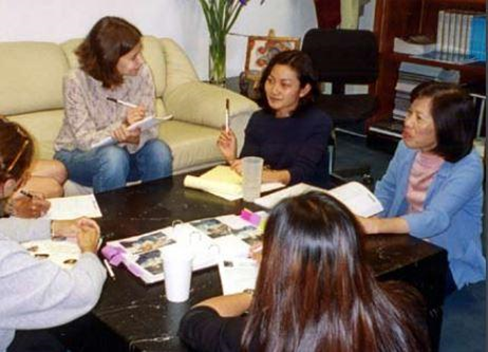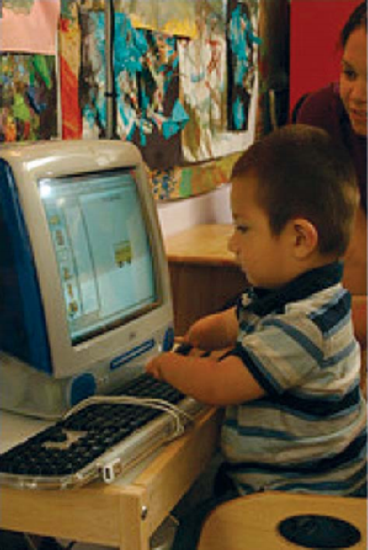26.8: Collaborating for Inclusion
- Page ID
- 142769
Working Together
Early childhood educators may need to expand how they reach out to families and link with specialists to meet the needs of children with differing abilities and learning characteristics. These two groups of people have vital information to share and can serve as resources to support children in a program. Their suggestions invariably enrich efforts at inclusion. Specialists themselves may even be able to visit a care facility and offer some on-site guidance.

Providing inclusive early childhood education does not mean a caregiver—or even a group of caregivers—has to do the work alone. Everyone has a role to play. The primary role of an early childhood educator is to nurture and support the child's development in a loving and caring manner. Partnerships formed with other adults caring for the child—the parents, health-care providers, or specialists—can complement the efforts of all concerned, especially when everyone concentrates on a particular strength. When the expertise of many are combined, ideas develop and strategies emerge better than those any one person could have developed alone. The result is the essence of true collaboration.[2]
For collaboration to be successful, the following elements are essential:
- Respect for the family's knowledge and experience with the child. They are the first and best resource and should be included in planning and implementing care of their child.
- Clear and regular communication, both informal or planned meetings.
- Time is reserved for collaboration, recognizing that everyone is likely to be pressed for time.
- Everyone has an investment and active involvement.
- Collaborative efforts to provide the appropriate assessments and support services for the child.
More information about identifying children with special needs and providing inclusive care can be found in the publication inclusion Works by the California Department of Education.[2]

[1] Infant/Toddler Learning and Development Program Guidelines by the California Department of Education is used with permission ↵
[2] Chapter 15: Families of Children with Special Needs or Special Health Care Needs by Krischa Esquivel; Emily Elam; Jennifer Paris; and Maricela Tafoya CC BY

